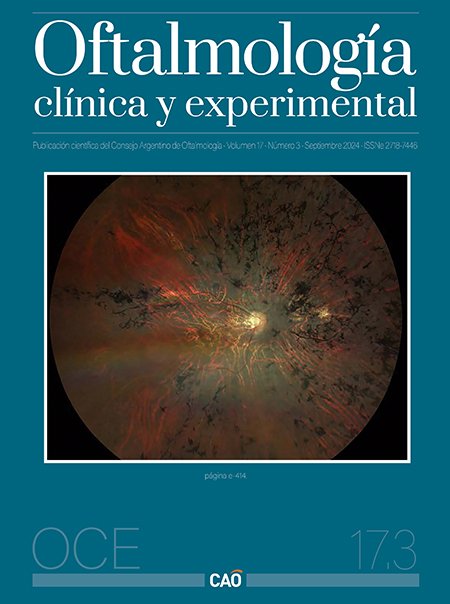Cholesterosis bulbi
DOI:
https://doi.org/10.70313/2718.7446.v17.n03.356Abstract
In 1975, Wand et al. explained that cholesterosis bulbi was a condition similar to but different from scintillating synchisis, although in current clinical practice these terms are often used interchangeably1. In the image below, an eye with typical cholesterosis bulbi is shown. This refers to a condition in which cholesterol crystals accumulate in the vitreous and may also pass into the anterior chamber of the eye. This accumulation can occur as a result of trauma or certain underlying ocular conditions, such as Coats disease, retinoblastoma, retinal detachment, retinal vasculopathy, among others. In our case we observed an eye with mixed hyperemia with deposits of iridescent and mobile crystals in the anterior chamber, accompanied by iridocrystalline synechiae. When the patient reaches this stage, he/she usually already has a painful blind eye secondary to glaucoma, which may require a surgical procedure to relieve pain, improve the patient's quality of life, as well as to take preventive measures for the contralateral eye.
Downloads
References
Wand M, Smith TR, Cogan DG. Cholesterosis bulbi: the ocular abnormality known as synchysis scintillans. Am J Ophthalmol 1975; 80: 177-183.
Downloads
Published
Issue
Section
License
Copyright (c) 2024 Consejo Argentino de Oftalmología

This work is licensed under a Creative Commons Attribution-NonCommercial-NoDerivatives 4.0 International License.
Con esta licencia no se permite un uso comercial de la obra original, ni la generación de obras derivadas. Las licencias Creative Commons permiten a los autores compartir y liberar sus obras en forma legal y segura.







